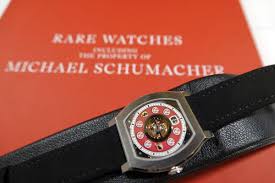Jeju Air crash: almost all presumed dead after South Korean aircraft ...

 View image in fullscreen
View image in fullscreen
Jeju Air crash: almost all presumed dead after South Korean aircraft veers off runway and hits wall
Footage appears to show Boeing 737-800 skidding along runway at Muan airport before hitting wall and catching fire
- South Korea plane crash – live updates
All but two of the 181 people aboard a plane that veered off a runway and hit a wall at an airport in South Korea are presumed to have died, fire authorities have said, according to Yonhap news agency. If confirmed, it would make it South Korea’s worst domestic civil aviation disaster.
Footage of the incident showed the Boeing 737-800 skid along the runway at Muan international airport on Sunday morning before striking what appeared to be a concrete barrier at high speed and bursting into flames as parts of the fuselage flew into the air.
A local fire official said the crash had likely been caused by a bird strike and weather conditions. The strike may have caused the landing gear to fail, Yonhap said. The flight had reportedly attempted one landing before being forced to “go-around” when the landing gear failed to lower normally.
“The cause of the accident is presumed to be a bird strike combined with adverse weather conditions,” Lee Jeong-hyun, chief of Muan fire station, told a media briefing. “However, the exact cause will be announced following a joint investigation.”
Previous major accidents on Korean soil include the 1993 Asiana Airlines crash in Mokpo that killed 68 people, and a 2002 Air China crash near Gimhae Airport that killed 129 of 166 passengers.
The accident occurred at around 9am local time, shortly after the plane, Jeju Air flight 7C2216, landed at the airport about 300km south-west of Seoul, at the end of a flight from Bangkok, the Yonhap news agency reported.
Thick plumes of smoke could be seen rising into the sky after the crash. Some photos showed fire engulfing parts of the aircraft.
Jeju Air, a low-cost carrier, switched its website to a minimalist, black background layout in response to the crash. In a statement it said: “Jeju Air deeply bows in apology to all those affected by the Muan airport accident. Our first priority is to do everything possible to manage this incident. We sincerely apologise for causing concern.”
A company official told Yonhap that the aircraft involved in Sunday’s crash had been in operation for 15 years and had no history of accidents.
Two crew members – a man and a woman – were rescued from the tail of the aircraft and had suffered “mid to severe” injuries, authorities said. The fire agency said it had mobilised 32 fire engines and scores of firefighters.
Local authorities said they were coordinating with major hospitals in the nearby city of Gwangju to handle the casualties.
 View image in fullscreen
View image in fullscreen
Officials said 173 of the passengers were Korean nationals and two were Thai nationals.
The Muan-Bangkok international route was launched just three weeks ago, on 8 December, as part of a broader revival that would see the regional airport operate routes to 18 international destinations across nine countries this winter season, according to Yonhap News.
The national fire agency said the initial fire in the wreckage of the plane was brought under control at 9.46am, 43 minutes after the first emergency call was received at 9.03am.
South Korea’s acting president, Choi Sang-mok, ordered “all available equipment and personnel to be mobilised” for the rescue operation and was heading to the scene of the crash.
The incident is the first major test for Choi, who assumed office on Friday after South Korea’s parliament voted to impeach the previous acting president, Han Duck-soo.
Experts said South Korea’s aviation industry has a solid track record for safety, and this was the first fatal accident Jeju Air, one of South Korea’s largest low-cost carriers, had experienced since it was launched in 2005.
On 12 August 2007, a Bombardier Q400 operated by Jeju Air carrying 74 passengers came off the runway due to strong winds at the southern Busan-Gimhae airport, resulting in a dozen injuries.
South Korean airlines have been involved in large-scale air disasters abroad. In 1997, a Korean Airline plane crashed in Guam, killing 228 people on board.
Sunday’s crash came almost a year after a Japan Airlines plane struck a coastguard aircraft and burst into flames as it landed at Haneda airport in Tokyo. All 379 passengers and 12 crew managed to exit the aircraft before it was engulfed in flames. Five crew members of the coastguard plane died in the accident.
- South Korea
- Asia Pacific
- Plane crashes
- news


 Canada
Canada Argentina
Argentina  Australia
Australia  Austria
Austria  Brazil
Brazil  Germany
Germany  Ireland
Ireland  Italy
Italy  Malaysia
Malaysia  Mexico
Mexico  New Zealand
New Zealand  Poland
Poland  South Africa
South Africa  United Kingdom
United Kingdom  United States
United States 


























